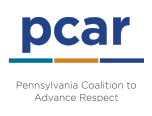Section 1: Introduction to Disability Justice, Practicing Respect, and Identities
Area 1: Disability Identities and Violence against People with Disabilities
Area 2: Models of Disability and Disability Justice as an Applied Framework
Area 3: Working More Effectively with Disabled Colleagues and Clients through Disability Justice
Summary
This section provides learners with an introduction to disability justice, how people with disabilities see themselves, and how to be more culturally aware and respectful of people with disabilities.
Area 1: Disability Identities and Violence against People with Disabilities
Words Matter: Exploring Identity and Language for Survivors with Disabilities: 90 minute webinar by End Abuse of People with Disabilities. Description: Recognizing and honoring people’s choices about their identity is critical to supporting survivors with disabilities. Service providers need to understand, respect, and uplift community members’ decisions about their identity, including the language that they use.
Abuse of People with Disabilities: A Silent Epidemic: 48 minute webinar by The ARC. Description: Self-advocates Kecia Weller and Molly Kennedy explain what abuse is, the different forms abuse can take, and how victims can report abuse.
Nothing about Us Without Us: 5 minute video. Description: People with disabilities from many backgrounds discuss the ways in which people with disabilities are segregated and invisibilized, and the aspirations they have for societal and cultural changes that contribute to disability justice.
Area 2: Models of Disability and Disability Justice as an Applied Framework
Disability Justice - a working draft by Patty Berne: 2000 word essay by Patty Berne, Sins Invalid. Description: A foundational essay describing the history, impacts, and values of the disability justice movement by Patty Berne, one of the founders of the modern Disability Justice movement.
My Body Doesn’t Oppress Me, Society Does: 5 minute video by the Barnard Center for Research on Women. Description: Patty Berne and Stacey Milbern present on the social model of disability, explaining how universal design, adaptive devices, and meeting people’s access needs can reduce the social, economic, and physical barriers that uphold ableism against people with disabilities. Milbern notes that focusing on individual impairments “lets society off the hook” for the structural oppression that renders some bodies and lives more valuable than others. Berne says “we are seen as disposable,” noting that the oppression that society ascribes to the individual body and disability is in fact a harmful social construction.
Changing the Framework: Disability Justice: How our communities can move beyond access to wholeness: 1,050 word essay by Mia Mingus, Leaving Evidence. Description: This essay describes the practical meaning of disability justice and why advocates are moving away from a legal disability rights model.
Abolition 101: 55 minute webinar by Dean Spade, 350 Seattle. Description: This webinar explains the theory and practice of abolition, which provides a foundational understanding of the praxis underlying disability justice.
What is the Americans with Disabilities Act (ADA)? 920 word essay + 5 minutes of video by the National Network on Information, Guidance, and Training on the ADA. Description: An essay explaining the history and application of the Americans with Disability Act of 1990. After the essay are 3 brief videos describing future advocacy efforts.
Medical Industrial Complex Visual: 2,100 word essay by Mia Mingus, Leaving Evidence. Description: This essay breaks down the implications of the medical model of disability and why this model is harmful.
Movement Work at the Intersections of Neurodiversity, Mad Pride, and Disability Justice with Lydia X. Z. Brown: 2 hour webinar by The Fireweed Collective and Icarus Project. Description: A deep exploration of the connections between the theories and practice of organizing across disability experiences and histories.
Area 3: Working More Effectively with Disabled Colleagues and Clients through Disability Justice
Moving at the Speed of Trust: Disability Justice and Transformative Justice: 2 hour webinar by the Bernard Center for Women featuring Leah Lakshmi Piepzna-Samarasinha and Elliott Fukui. Description: In response to heightened levels of abuse and violence experienced by people with disabilities, disability justice organizers have developed tremendous knowledge and creative approaches to care, safety, and preventing and stopping violence without relying on the state. How do disability justice strategies and knowledge inform transformative justice practices? How are disability justice and transformative justice interconnected? How is anti-ableism essential to transformative justice? How do we start with the shared values of self-determination and the belief that no one is disposable to build capacity for personal and societal transformation?
The Spectrum of Prevention in Rape Crisis Centers: Risk Factors and People with Disabilities: 1 hour, 40 minute webinar by Indiana Disability Justice. Description: The overwhelming majority of people with disabilities will experience sexual violence in their lifetime. Despite such high victimization rates, there is a lack of research on sexual violence against people with disabilities. Indiana Disability Justice highlights the findings of a literature review IDJ conducted regarding risk factors for sexual violence among people with disabilities. Haleigh Rigger discusses what Rape Crisis Centers (RCCs) can do to engage in primary prevention of sexual violence against people with disabilities within their agencies and in local communities.
Safety Planning with People with Disabilities and Deaf* People A Working Guide: 78 page PDF by SAFE Austin. Description: A comprehensive safety planning guide that addresses general questions for safety, safety planning for people with a variety of disabilities, planning for safety in the home, and includes safety planning forms and resource referrals.
